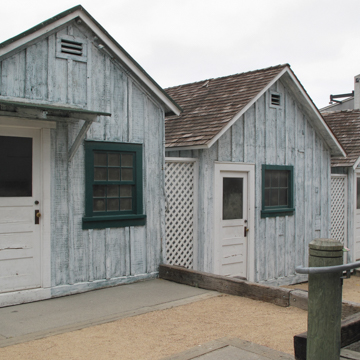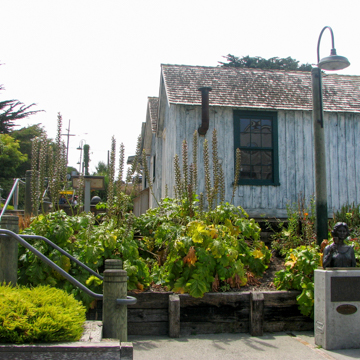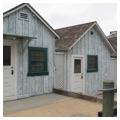Bruce Ariss Way is a narrow alley, the pedestrian-only continuation of Irving Avenue between Wave Street and Cannery Row. What was once an unofficial footpath between the row’s residential area, across the railroad tracks, and the canneries on the waterfront has been transformed into a small park. In the early 1990s, the City of Monterey relocated three workers’ shacks from 866 Wave Street to this location and opened them to the public. They are each interpreted as being inhabited by a Japanese, Filipino, and Spanish family, respectively, alluding to the mix of cultures that characterized cosmopolitan Cannery Row and representing workers’ living conditions between 1920 and 1950. In the early twentieth century, shacks like these were plentiful in the neighborhood, but these are the only remaining vestiges of this housing type on Cannery Row.
The single-story, one-room houses are wood frame, built of a single layer of lumber. The exteriors are sheathed in board and batten, while the front-gable roofs are clad in wooden shingles. Each facade has a wooden entry door with a top light, while two cottages have windows. Although the shacks were only one-room deep, they had small kitchen areas with running water and natural gas as well as electricity.
References
Architectural Resources Group. “Final Cannery Row Cultural Resources Survey Report Document.” Prepared for the City of Monterey, California, 2001.






